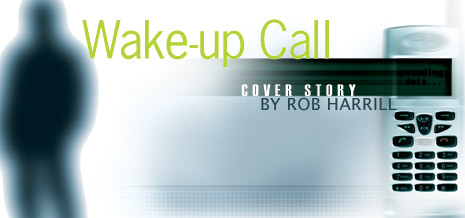

It's a point well taken, Lai says. However, what the science seems to say depends on how you quantify it.
Lai says there have been about 200 studies on the biological effects of cell-phone-related radiation. If you put all the ones that say there is a biological effect on one side and those that say there is no effect on the other, you'd have two piles roughly equal in size. The research splits about 50-50.
"That, in and of itself, is alarming," Lai says. But it's not the whole story. If you divide up the same 200 studies by who sponsored the research, the numbers change.
"When you look at the non-industry sponsored research, it's about three to one-three out of every four papers shows an effect," Lai says. "Then, if you look at the industry-funded research, it's almost opposite-only one out of every four papers shows an effect."
The problem, he adds, is that there is no longer funding available in the United States that isn't attached to the industry. Lai, for one, refuses to take any more industry money.
"There are too many strings attached," he maintains. "Everyone uses the analogy of the tobacco industry and what happened there. It's like letting the fox watch the henhouse." While the FDA administers cell phone radiation studies, the money comes from the industry, he adds.
 Microwave News Editor Slesin says he has pondered why government funding isn't available. His hypothesis is that it's a matter of attitude.
Microwave News Editor Slesin says he has pondered why government funding isn't available. His hypothesis is that it's a matter of attitude.
"There is a view out there among many scientists that this is just impossible-the radiation is too weak and there cannot be any effects," Slesin says. "We all know that ionizing radiation is bad. Ions are more reactive, there's no doubt it can lead to cancer, it's nasty stuff."
The people who work with ionizing radiation see EMF radiation-that from electromagnetic fields-as a 97-pound weakling, he continues. They believe it's not capable of doing anything.
"Yet, when you see effects like Henry reported, especially at the low power intensities, you have to ask what is going on to cause this?" he says. "As long as that attitude remains unchanged, you won't get more funding and you don't get anywhere."
As a result, many U.S. scientists have moved on, either focusing on other areas or leaving the research arena altogether, relying on the rest of the world to pick up the slack. In Lai's case, he is pursuing other research directions, where he can get funding. The most promising involves artemisinin, a derivative from the wormwood plant currently used to treat malaria. Lai's research shows it has promise as a powerful anti-cancer agent. Late last year, the UW licensed the technology to a Chinese pharmaceutical company that plans to take it to human trials and, if successful, to market.
After what happened in Loma Linda, Phillips and his wife left research altogether. They now live in Colorado Springs, Colo., where he works for a company that develops science curricula. "I do have a lot of regret for those lost opportunities," Phillips says. "We were really in a position to develop some good basic understandings of how radio frequency affects biological systems."
 It's an issue that desperately needs to be explored, according to Slesin. Right now, a solid understanding doesn't exist. If anyone says they absolutely have the answer, he cautions, absolutely don't believe them. "We are swimming in uncertainty."
It's an issue that desperately needs to be explored, according to Slesin. Right now, a solid understanding doesn't exist. If anyone says they absolutely have the answer, he cautions, absolutely don't believe them. "We are swimming in uncertainty."
And the issue becomes increasingly relevant with each passing day.
"We are making some fundamental changes to the electromagnetic environment in which we live," Slesin continues. "Soon entire cities will be online so you can take your laptop anywhere and be on the Internet. What that means is we will all be exposed to electromagnetic radiation 24/7. I don't know if there's a problem, but I think we owe it to society to find out."
In the meantime, Lai prefers to err on the side of caution. He doesn't use a cell phone and requires that cell-savvy family members use headsets. He doesn't see the problem as intractable, just one that needs serious attention. We engineered the technology, he says, and he's confident that we can engineer our way out of any problems. But first, we need to take a close look at the data and admit that there may be a problem.
Either way, the answers will come, given time, Lai says. The question is will we get those answers in the way we want?
"We see effects, but we don't know what the consequences are," Lai says. "With so many people using cell phones, we will eventually know. The largest experiment in the history of the world is already under way. We will know, in about 10 or 15 years, maybe."
-Rob Harrill is the engineering writer in the UW's College of Engineering. Although his children are not allowed cell phones (despite repeated pleas), both he and his wife use one-sparingly.
Go To: Page 1 | Page 2 | Page 3 | Page 4
Inside the Wave: Web exclusive on more cell phone radiation research
Making Waves: Worrisome results from European cell phone study
Old Medicine, New Cure?: Henry Lai's cancer research shows promise